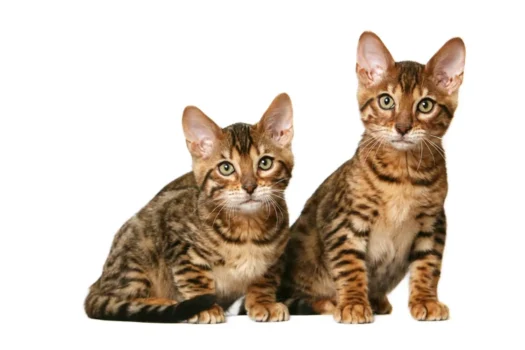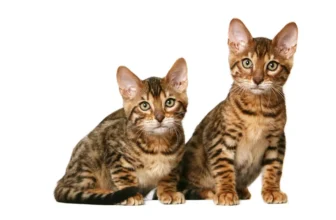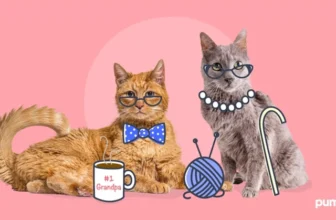The Basics of California Spangled Feline Health
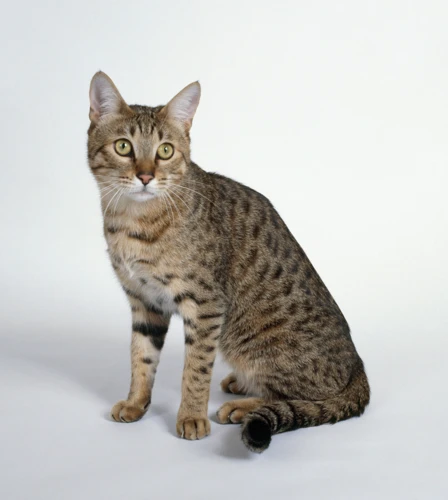
California Spangled Cats are a unique and special breed that require specific attention to maintain their health and overall well-being. These cats are generally healthy and have a life expectancy of around 12-14 years. However, as with any breed, they are still prone to certain health issues. It’s important to keep up with routine healthcare and schedule regular veterinary check-ups to ensure that any potential health concerns are caught early on.
Feeding your California Spangled a well-balanced diet with the necessary nutrients and vitamins is crucial to their overall health. It’s important to understand the dietary needs of your cat and to consult with your veterinarian for recommendations on the best food options. Additionally, spaying or neutering your California Spangled can prevent certain health issues and unwanted behaviors such as spraying and roaming.
Dental health is also a critical component of overall health. Regular dental check-ups and cleanings can prevent serious issues such as gum disease or tooth decay. Brushing your cat’s teeth at home can also help maintain good dental health.
Allergies can also be a concern for California Spangled Cats. If you notice your cat exhibiting symptoms such as itching, sneezing, or skin irritation, it’s important to consult with your veterinarian.
There are alternative healthcare options available for California Spangled Cats as well. These may include acupuncture, herbal remedies, or chiropractic care. However, it’s important to consult with a licensed veterinarian before pursuing these alternative options.
It’s important to stay up to date on your California Spangled’s healthcare needs. Taking preventative measures such as spaying/neutering, maintaining a healthy diet, and keeping up with dental check-ups can prevent potential health issues down the road. Additionally, regular veterinary check-ups can catch any issues early on, leading to a better prognosis and ultimately a longer and healthier life for your beloved feline companion. For more tips on California Spangled cat health, check out www.example.com/ca-spangled-cat-health-tips/.
Why Schedule Regular Vet Check-Ups?
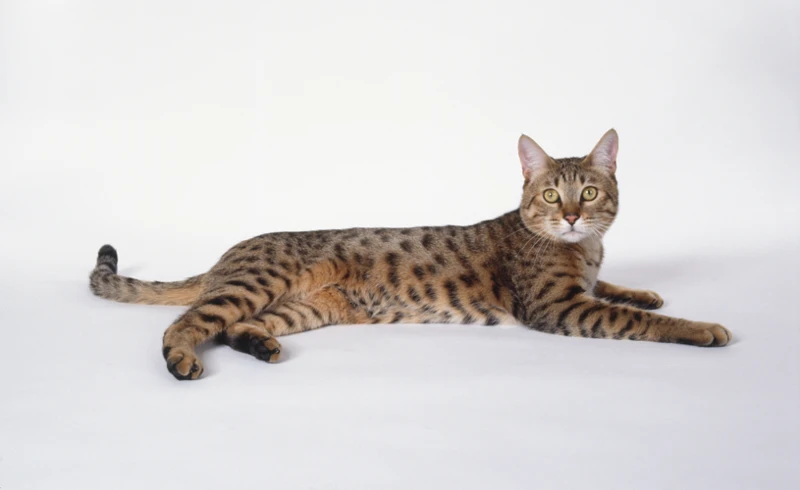
Regular vet check-ups are a crucial part of maintaining the health and wellbeing of your California Spangled. Even if your feline companion appears to be perfectly healthy, there could be underlying health issues that only a trained veterinarian can detect. In this section, we will discuss the importance of regular vet check-ups for your California Spangled and why you should prioritize these appointments for your furry friend’s health. Keep reading to learn more about detecting health issues early, lifelong preventative care, and maintaining optimal health with nutrition counseling. If you want to learn more about healthcare plans for your California Spangled, click here.
Detecting Health Issues Early
Early detection of health issues is crucial in maintaining the wellbeing of your California Spangled. Regular check-ups with your veterinarian can help catch potential problems before they escalate into something more serious. During the check-up, your vet will perform a thorough physical exam to assess your cat’s overall health. This can include checking your cat’s eyes, ears, teeth, and coat. Any abnormalities or changes will be noted and addressed accordingly.
Some common health issues that can be detected early during a check-up include heart disease, obesity, oral health issues, and arthritis. Obesity is a growing concern among cats in the United States, and detecting it early can help prevent other health issues. Your vet can also assess your cat’s dental health and provide preventative measures to avoid costly dental procedures in the future. Early detection of heart disease, arthritis, and other issues can allow for proper management and treatment, which can greatly improve your cat’s quality of life.
In addition to physical exams, your vet may recommend diagnostic testing or bloodwork to further evaluate your cat’s health. This can help detect potential health issues that may not be visible during the physical exam. Early detection is key in treating and managing many health issues that your cat may face.
Regular check-ups also provide an opportunity to discuss any concerns regarding your cat’s health and behavior with your veterinarian. They can provide you with personalized recommendations on nutrition, exercise, and preventative measures specific to your cat’s needs. If you’re considering alternative healthcare options for your California Spangled, your vet can also provide guidance and recommendations.
Ultimately, early detection of health issues during regular check-ups with your veterinarian can prevent potentially serious health problems down the line and ensure that your cat lives a happy and healthy life. Visit sick-california-spangled-cat-vet-visit for more information on when to take your California Spangled to the vet.
Lifelong Preventative Care
Lifelong Preventative Care
As responsible pet owners, we all want our California Spangled cats to live long, healthy lives. One of the most effective ways to accomplish this is through regular preventative care. Preventative care involves taking measures to maintain your cat’s health and wellbeing, as opposed to just treating illnesses and injuries after they occur. This approach can help catch potential health issues early before it becomes a serious concern.
Preventative care comes in many forms and can vary depending on your cat’s age, lifestyle, and overall health. However, it typically involves routine check-ups and exams, vaccinations, parasite control and prevention, and diet and nutrition management. Below are some of the main components of preventative care for your California Spangled:
| Exams and Check-Ups | Regular veterinary exams are an essential part of preventative care. Your veterinarian can perform a comprehensive physical exam to look for any signs of illness or disease. This can include a check of vital signs, such as heart rate and blood pressure, as well as examination of the eyes, ears, nose, mouth, and skin. Routine check-ups can help to identify potential health issues early, making them easier and more affordable to treat. |
| Vaccinations | Vaccinations can help protect your California Spangled from serious and potentially life-threatening diseases. The exact vaccine schedule can vary depending on a cat’s individual needs, but it typically involves initial vaccines when the cat is a kitten, followed by booster shots throughout their lives. Some common vaccines for cats include those for rabies, feline leukemia, and distemper. |
| Parasite Control and Prevention | Preventing and controlling parasites is also an essential part of preventative care. This can include regular flea and tick preventatives, heartworm prevention, and deworming. Parasites can cause a range of health issues, from skin irritation to serious illness, and treatment can become complex and costly if left untreated. |
| Diet and Nutrition | Good nutrition is key to overall health and wellbeing in cats. A balanced diet can help prevent health issues such as obesity, heart disease, and diabetes. Talk to your veterinarian about the best diet and feeding regimen for your pet and consider adding supplements such as vitamins and minerals to their diet if advised to do so. You can learn more about the appropriate vitamins and minerals for California Spangled cats by visiting /t5-vitamins-minerals-california-spangled-cats/. |
| Dental Care | Dental hygiene is crucial in maintaining your California Spangled’s overall health. Regular teeth cleaning and check-ups with your veterinarian can help prevent dental issues such as gum disease, tooth decay, and infections. Additionally, an appropriate dental cleaning routine at home can help minimize dental plaque and tartar accumulation. Learn more about preventing dental problems in California Spangled cats by visiting /cali-spangled-cat-dental-problems-prevention/. |
| Spaying/Neutering | Spaying or neutering your cat is an essential part of preventative care. This procedure can prevent many health issues, including certain types of cancers and reproductive disorders. For more information about spaying and neutering with regard to California Spangled cats, please visit /cali-spangled-spay-neuter/. |
| Alternative Healthcare Options | There are various alternative health options available for California Spangled cats, such as acupuncture and herbal remedies. These options can help improve your cat’s overall health and may be beneficial in treating certain conditions. However, it’s important to talk to your veterinarian before trying any alternative treatments. Learn more about alternative healthcare for California Spangled cats at /alt-healthcare-options-california-spangled-cats/. |
By following a comprehensive preventative care plan, you can help your California Spangled cat live a long, healthy life. Remember, the best way to maintain your cat’s health is through regular and consistent care. Consult with your veterinarian to determine what plan works best for you and your feline companion.
Maintaining Optimal Health With Nutrition Counseling
Proper nutrition is essential for a California Spangled cat’s overall health and well-being. Nutrition counseling during regular vet check-ups can help maintain optimal health for your furry friend. A well-balanced diet that supports a healthy weight, strong bones, and a shiny coat is crucial.
Nutrition counseling can provide you with:
- Guidance on choosing the right type of food for your California Spangled cat
- Understanding what nutrient requirements are essential for your cat’s health
- Advice on how much food and how often to feed your feline companion
- Information on how to make dietary changes to meet your cat’s changing nutritional needs as they age
- Tips on managing any food allergies that your cat may experience
The vet may ask for information about your cat’s current diet, such as what brand of food you are feeding your cat and how much they get each day. They may also recommend changes in your cat’s diet to meet their specific nutritional needs. If your cat has any underlying medical conditions such as allergies or dental problems, the vet may suggest a specialized diet to manage these conditions.
Following the advice of your vet can help prevent obesity and other health problems in your cat. Feeding your cat a balanced and nutritious diet can provide them with the necessary energy and nutrients to play and climb and help ensure they live a long and happy life. For more information on the best diet for a California Spangled cat, be sure to check out our article “What to Feed Your California Spangled Cat for Optimal Health”. Additionally, if you have any concerns about your cat’s allergies, read up on our article on “How to Manage Allergies in California Spangled Cats.” For tips on preventing dental problems in your cat, have a read of our article “Preventing Dental Problems in Your California Spangled Cat.”
What to Expect During Your California Spangled’s Vet Check-Up

As a California Spangled cat owner, it is important to know what to expect during your feline’s veterinary check-up. The visit is a critical step in ensuring your pet’s health and wellbeing. During the check-up, your vet will conduct a thorough examination, assess your cat’s overall health, and address any specific concerns or issues. Understanding the various components of your cat’s vet check-up will help you prepare and make the most out of the visit. Let’s dive into the details!
A Comprehensive Physical Exam to Assess Your Cat’s Health
During your California Spangled’s vet check-up, a comprehensive physical exam will be conducted to assess your cat’s overall health. This is a crucial component of the check-up as it allows the veterinarian to identify any potential health issues that may require further testing or treatment.
The physical exam will generally include the following:
- Weight and Body Condition: The veterinarian will record your cat’s weight and assess their body condition score to evaluate whether they are underweight, overweight, or at their ideal weight.
- Body Temperature: The vet will take your cat’s temperature to check for signs of fever or hypothermia.
- Eyes and Ears: The vet will examine your cat’s eyes and ears for any signs of infection or inflammation. They may also use an ophthalmoscope to look deeper into the eyes to assess your cat’s overall eye health.
- Mouth and Teeth: The vet will examine the inside of your cat’s mouth, gums, and teeth to check for any signs of dental issues or gum disease.
- Heart and Lungs: Using a stethoscope, the vet will listen to your cat’s heart and lungs to assess the function and check for any abnormalities such as a heart murmur or difficulty breathing.
- Abdomen and Organs: The vet will palpate your cat’s abdomen to feel for any abnormalities or masses. They may also examine other organs such as the liver and kidneys to check for any signs of disease or dysfunction.
- Skin and Coat: The vet will examine your cat’s skin and coat for any signs of irritation, infection, or parasites. They may use a flea comb to check for flea dirt or live fleas on your cat’s coat.
It’s important to note that even if your cat appears healthy and you haven’t noticed any signs of illness, regular vet check-ups are still necessary. Many feline health issues may not show visible symptoms until they have progressed, and early detection is key to successful treatment. Additionally, an annual physical exam provides a valuable baseline for your cat’s overall health that can be used to identify changes over time.
Vaccinations and Preventive Therapies
During your California Spangled’s regular vet check-up, vaccinations and preventive therapies are crucial for maintaining their health and well-being. Below are some of the essential vaccinations and preventive therapies that your vet may recommend:
1. Feline Distemper: This viral infection can cause serious gastrointestinal, respiratory, and nervous system problems. The distemper vaccine is considered a core vaccine and is recommended for all cats.
2. Feline Herpesvirus and Calicivirus: These two viruses are the most common causes of upper respiratory infections in cats. The vaccine for these viruses is also considered a core vaccine and is usually given in combination with the distemper vaccine.
3. Rabies: Rabies is a deadly virus that can be transmitted to humans from infected animals. It is mandatory in most states to vaccinate cats against rabies. Even indoor cats are at risk, as bats can sometimes find their way into homes and transmit the virus.
4. Feline Leukemia Virus: Feline Leukemia Virus (FeLV) is a serious, often fatal virus that weakens the cat’s immune system and makes them more susceptible to other infections and diseases. The FeLV vaccine is recommended for cats who go outdoors or live with other cats who go outdoors.
5. Flea and Tick Prevention: Fleas and ticks not only cause discomfort for your cat, but they can also transmit diseases. Preventive therapies such as topical treatments, collars, and oral medications can help keep your cat flea and tick-free.
6. Heartworm Prevention: Heartworms are worms that live in the heart and lungs of infected cats. They are transmitted by infected mosquitoes. Preventive medication can help protect your cat from this potentially fatal disease.
7. Intestinal Parasite Prevention: Regular deworming and fecal exams can help prevent and detect common intestinal parasites such as roundworms, tapeworms, and hookworms.
It is essential to follow your vet’s recommendations for vaccinations and preventive therapies. Staying up-to-date on these important measures can help keep your California Spangled healthy and happy for years to come.
Diagnostic Testing
During your California Spangled’s vet check-up, diagnostic testing may be recommended to identify any potential health problems that may not be immediately apparent. This could include various laboratory tests, imaging scans, or other forms of diagnostic testing. It’s important to understand why diagnostic testing is essential for the overall well-being of your beloved feline companion.
Why is Diagnostic Testing Important?
Diagnostic testing can be used to identify underlying health issues that your cat may have, even if they aren’t showing obvious symptoms. This can help catch potential health concerns early, which can potentially prevent more serious health problems from developing later on. Diagnostic testing can also provide more detailed information about the current state of your cat’s health, helping your vet to determine the best course of treatment or preventative care.
Examples of Diagnostic Testing for Cats
There are various types of diagnostic testing that your veterinarian may recommend for your California Spangled. Here are a few examples:
| Blood Tests | These tests generally involve taking a sample of your cat’s blood and analyzing it for various markers or abnormalities. A complete blood count (CBC) can provide information about your cat’s red and white blood cells, while a blood chemistry panel can provide information about their liver and kidney function, among other things. |
| Urinalysis | Urinalysis testing can provide valuable information about your cat’s kidney function and overall health by analyzing their urine for protein, glucose, and other substances. |
| X-Rays | X-rays can be used to examine your cat’s bones, organs, and other internal structures. This can help identify potential health issues that may not be immediately visible, such as tumors or foreign objects in the digestive system. |
| Ultrasound | Ultrasound testing can be used to evaluate your cat’s internal organs, including the liver, kidneys, bladder, and reproductive system. This can help identify potential health problems that may not be visible on x-rays or other imaging scans. |
| Other Tests | Depending on your cat’s individual health needs, your vet may recommend other forms of diagnostic testing, such as fecal exams, electrocardiograms (ECGs), or specialized blood tests to check for certain diseases. |
When Should Diagnostic Testing be Done?
The frequency of diagnostic testing for your California Spangled will depend on their overall health, age, and any individual health concerns they may have. In general, older cats and those with a history of health problems may require more frequent diagnostic testing than younger, healthy cats. Your vet will be able to recommend a testing schedule based on your cat’s unique needs.
Conclusion
Diagnostic testing is an essential part of maintaining your California Spangled’s health. By identifying potential health concerns early and providing detailed information about your cat’s overall health, diagnostic testing can help ensure that your beloved feline companion receives the highest quality of care. Talk to your veterinarian today about how diagnostic testing can benefit your furry friend.
Dental Health Examination
During your California Spangled’s regular vet check-up, the vet will conduct a dental health examination to assess the overall health of your feline companion’s teeth and gums. This is an important part of the examination as dental issues can quickly progress into more serious health problems. Here are some of the steps that may be taken during a dental health examination:
- The vet will visually examine the teeth and gums for any signs of inflammation, bleeding, or other abnormalities.
- The vet may also use a dental probe to check for any pockets between the teeth and gums where bacteria can accumulate and lead to infection.
- If there are signs of dental disease, the vet may recommend a dental cleaning procedure.
- If your cat is showing signs of dental pain or discomfort, the vet may recommend X-rays to check for underlying dental issues.
It’s important to maintain your California Spangled’s dental health as part of their overall care. Periodontal disease can lead to tooth and bone loss, and can even affect organs such as the heart and kidneys if left untreated. Regular dental check-ups and cleanings can help prevent these serious issues. Additionally, the vet may recommend specific dental care products or diets to help maintain your cat’s dental health.
Remember, good dental hygiene isn’t just important for humans – your pet’s teeth matter too!
Parasite Prevention and Treatment
When you bring your California Spangled to the vet for a check-up, one aspect that will be addressed is parasite prevention and treatment. Parasites can be harmful to your feline companion’s health and can even be transmitted to humans, which is why prevention and treatment are important. Parasites that can infect cats include fleas, ticks, ear mites, and intestinal worms such as roundworms and hookworms.
Prevention: Your vet will recommend a preventative plan that is tailored to your feline’s individual needs and lifestyle. This may include flea and tick preventatives such as topical treatments or collars, as well as regular deworming medications to prevent the buildup of intestinal parasites. Outdoor cats may need more frequent parasite prevention than indoor cats.
Treatment: If your California Spangled has been infected with parasites, your vet will recommend appropriate treatment. This can include topical or oral medications for fleas and ticks, ear drops for ear mites, and deworming medications for intestinal parasites. For more severe cases, hospitalization and intravenous fluids may be necessary.
Common Symptoms of Parasite Infection: If you notice your California Spangled exhibiting any of the following symptoms, it is important to bring them to your vet’s attention as soon as possible, as they may indicate a parasite infection:
| Symptom | Description |
| Frequent scratching or biting | May indicate flea or tick infestation |
| Shaking their head | May indicate ear mite infestation |
| Weight loss or poor appetite | May indicate intestinal parasite infection |
| Vomiting or diarrhea | May indicate various types of parasitic infections |
Staying on top of parasite prevention and treatment is an important aspect of keeping your California Spangled healthy and happy. Your vet will be able to provide personalized recommendations for your cat’s parasite prevention and treatment needs.
Behavior and Lifestyle Assessment
During your California Spangled’s vet check-up, the veterinarian will likely conduct a behavior and lifestyle assessment. This involves evaluating your cat’s overall demeanor and habits, as well as discussing their daily routine and any changes you may have noticed in their behavior. This assessment can provide valuable insights into your cat’s physical and emotional well-being.
The behavior and lifestyle assessment typically includes a series of questions about your cat’s diet, exercise habits, and sleep patterns. Your vet may also ask about your cat’s stress level and any recent changes to their environment or routine, as these factors can all affect feline behavior.
To accurately assess your cat’s behavior, the veterinarian may also observe their body language and interactions with their surroundings. This can provide important clues about their mood, stress level, and overall comfort.
In addition to discussing the physical and emotional factors that can impact your cat’s health, the vet may also make recommendations for improving their overall well-being. This can include suggestions for a more balanced diet, more regular exercise, and ways to reduce stress and anxiety.
Here is an example of a behavior and lifestyle assessment table:
| Behavior/Lifestyle Assessment | Questions to consider |
|---|---|
| Diet |
|
| Exercise |
|
| Sleep Patterns |
|
| Stress Level |
|
The behavior and lifestyle assessment is an important part of the California Spangled’s vet check-up, as it can provide valuable insights into their overall health and well-being. By evaluating your cat’s behavior and habits, the vet can make recommendations for lifestyle changes that can help improve their quality of life and prevent future health issues.
Factors to Consider When Choosing a Vet
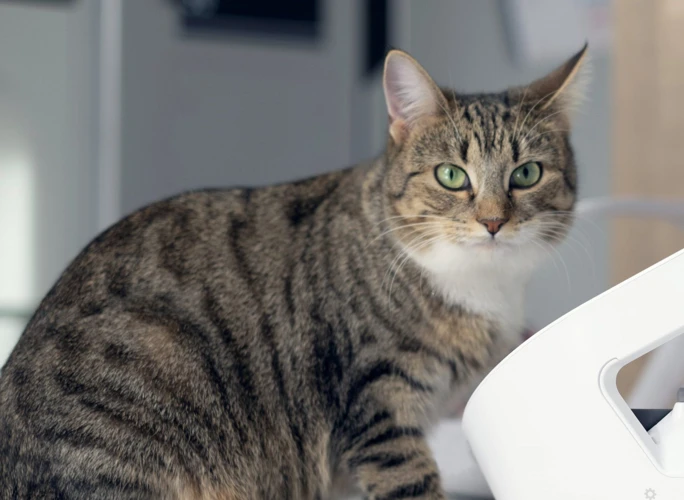
Choosing the right veterinarian for your California Spangled is an important decision that can affect their overall health and quality of life. There are several factors to consider when selecting a vet, from their credentials and experience to the clinic’s location and environment. Making an informed choice will ensure that your feline companion receives the best possible care, which can make a world of difference in their well-being. Let’s take a closer look at some of the essential factors to consider when choosing a vet for your beloved California Spangled.
Credentials and Experience
When choosing a veterinarian for your California Spangled, it’s important to consider their credentials and experience. Look for a vet who is licensed and has completed veterinary school. It’s also a good idea to check if the vet has any additional certifications or memberships to professional organizations.
Experience is also essential. A vet who has been practicing for several years has likely encountered a wide range of feline health issues and is more likely to provide effective treatments. Check online reviews or ask for references to gauge other pet owners’ experiences with the vet.
Another thing to consider is the veterinary team’s qualifications. A knowledgeable support staff can also contribute to quality care. Look for a clinic where the veterinary technicians are certified or associate degree holders.
One way to determine a vet’s level of experience is by asking how often they treat California Spangled cats. Certain breeds may have specific health concerns that a vet may not have encountered before, and therefore might require special knowledge.
Remember that you should feel comfortable with your vet and their team members. They should show a genuine interest in your cat’s health and be willing to answer questions and discuss concerns at length.
Availability and Location
When choosing a veterinarian for your California Spangled, it’s important to consider their availability and location. You want a vet who is convenient to get to and will be there when you need them. Factors to consider when evaluating a veterinary practice’s availability and location might include:
| Factor | Description |
|---|---|
| Office hours | You want to find a practice with hours that work for your schedule. Some vets offer evening or weekend appointments, which can be helpful if you work a traditional 9-5 job. |
| Emergency services | It’s important to know what kind of emergency services a practice provides. Some vets offer 24/7 emergency care, while others may refer you to a specialty clinic after hours. Either way, it’s important to know what your options are in case of an emergency. |
| Multiple locations | If you have multiple pets or live in an area where you spend a lot of time, you may want to consider a vet with multiple locations. This can make it easier to schedule appointments and may be more convenient if you’re traveling with your cat. |
| Proximity to home | The closer your vet is to home, the easier it will be to get there for routine check-ups and appointments. |
Keep in mind that some aspects of availability and location may be more important to you than others. For example, if you work from home and have a flexible schedule, you may prioritize location over office hours. On the other hand, if you travel frequently and need a vet who can accommodate your schedule, you may prioritize finding a practice with extended hours or multiple locations. Ultimately, it’s up to you to find a vet who meets your needs and can provide the best care for your feline friend.
The Clinic Environment
The clinic environment is an important factor to consider when choosing a vet for your California Spangled cat. You want to choose a clinic that is clean and comfortable for your feline companion, as well as having a welcoming and friendly atmosphere for both yourself and your pet.
Some factors to consider when evaluating the clinic environment include:
| Cleanliness: | Make sure the clinic is well maintained, clean, and odor-free. A dirty environment can increase the risk of infection and disease transmission. |
| Facilities: | Check the facilities to ensure they are up-to-date and well-maintained. Look for features such as exam rooms, surgical suites, and a pharmacy. Also, check if the clinic has advanced diagnostic equipment such as x-ray and ultrasound. |
| Staff: | Observe and interact with the staff to determine if they are friendly, caring, and knowledgeable. You want a team that not only has expertise in feline care but also has a passion for helping animals. |
| Waiting Room: | Observe the waiting room area to see if it is comfortable, spacious, and clean. Look for features such as separate areas for cats and dogs, as well as toys and treats to help distract and calm your pet. |
| Online reviews: | Read online reviews to gauge the overall satisfaction of other pet owners who have used the clinic for their cats. Be sure to read reviews from multiple sources to ensure you are getting a broad perspective. |
Choosing the right clinic environment is essential to ensuring your California Spangled cat is in good hands and receives the best possible care. A clean, comfortable, and welcoming environment can help reduce the stress and anxiety your pet may feel during vet visits, and make the entire experience more positive for both you and your furry friend.
Your Budget and Payment Options
It’s important to consider your budget when choosing a vet for your California Spangled, as veterinary services can vary greatly in cost.Costs can depend on location, the type of services offered, and the credentials of the veterinarian or clinic. It’s important to do your research and compare prices before making a decision.
When considering payment options, most vet clinics accept cash, credit cards, and checks. Some clinics may also offer payment plans or financing options for more expensive procedures. It’s important to ask about payment options before your visit and to be aware of any potential fees or additional costs.
Another option to consider is pet insurance, which can help cover the cost of unexpected vet visits. Many pet insurance plans cover routine check-ups, diagnostics, and treatments, which can provide peace of mind and financial support.
When considering your budget and payment options, it’s important to find a vet that offers quality care at a price point that works for you. Be sure to ask about payment options before your visit and consider pet insurance as an additional safeguard for unexpected expenses.
How Often Should You Take Your California Spangled to the Vet?
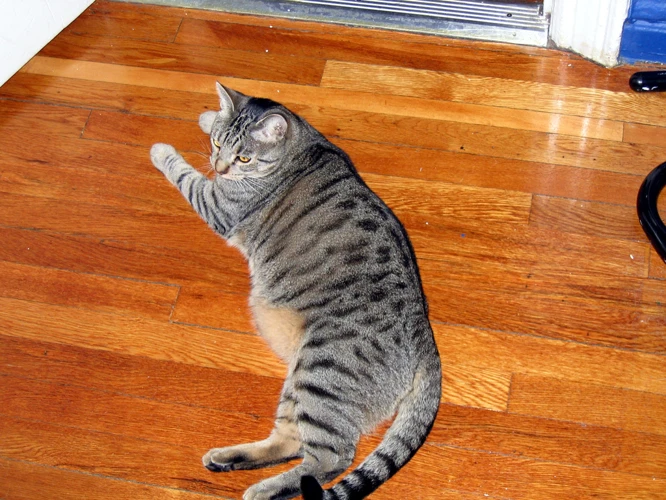
As a responsible pet owner, you want to ensure that your California Spangled cat is healthy and happy throughout their life. A crucial part of maintaining your cat’s health is scheduling regular check-ups with a veterinarian. But how often should you take your furry friend to the vet? The answer to this question is not a simple one, as it depends on various factors, such as your cat’s age, health status, and lifestyle. In this section, we will delve into these factors and provide you with guidelines to help you determine how often you should schedule vet visits for your California Spangled.
Kittenhood and First Year
Kittenhood and First Year
During the first year of your California Spangled’s life, it’s important to schedule multiple vet check-ups to establish a baseline of their overall health and to detect any potential health issues early on. Below are some factors to consider when taking your kitten to the vet:
- Vaccines: Your kitten will need a series of vaccinations to protect them from common feline diseases such as feline herpesvirus, calicivirus, and panleukopenia. Your vet will create a vaccination schedule based on your kitten’s age and overall health.
- Nutrition: A properly balanced diet is important for your kitten’s growth and well-being. Your vet can recommend a suitable kitten food and feeding schedule based on your furry friend’s specific needs.
- Parasite prevention: Kittens are more susceptible to parasites such as fleas, ticks, and heartworms. Your vet can recommend preventive measures such as flea and tick prevention and medications to prevent heartworms.
- Socialization: During the first year of your kitten’s life, they should be exposed to new experiences and socialized with people and other pets. Your vet can provide guidance on how to socialize your kitten and help them develop good behavior habits.
By bringing your kitten to the vet regularly during their first year of life, you can ensure that they are on track for a healthy life.
Adulthood
Once your California Spangled cat reaches adulthood, regular vet check-ups are still essential for maintaining their overall health and wellbeing. During these check-ups, the vet will perform a comprehensive physical exam to assess your cat’s health, check their weight, and discuss any health concerns you may have. They may also recommend a blood test to check for any underlying health issues that may not be immediately apparent.
Discussing Nutrition
During adulthood, it’s important to ensure your California Spangled is receiving the proper nutrition to maintain a healthy weight and prevent conditions such as diabetes or obesity. Your vet can offer nutrition counseling and discuss the best diet for your cat’s individual needs, including the type and quantity of food to feed them.
Preventive Care
In addition to discussing nutrition, your vet will also discuss preventive care for your California Spangled. This may include vaccinations to protect against common illnesses, as well as regular parasite prevention and treatment for issues such as fleas and ticks.
Diagnostic Testing
As your California Spangled ages, they may be more susceptible to certain health conditions. Your vet may recommend diagnostic testing such as blood work or imaging to detect any potential health issues early. This can allow for prompt treatment and a better chance at a positive outcome.
Dental Health Examination
Dental health is important for cats of all ages, but is particularly important during adulthood. Your vet will perform a dental health examination to check for any signs of periodontal disease or other dental issues. They may recommend dental cleanings or other treatments to maintain your cat’s oral health.
Behavior and Lifestyle Assessment
During adulthood, your California Spangled may experience changes in behavior or lifestyle. Your vet can assess these changes and offer recommendations for managing them. This may include advice on introducing new pets to the household or managing any behavioral issues that may arise.
By scheduling regular vet check-ups during adulthood, you can help ensure your California Spangled stays healthy and happy for years to come.
Senior Years
As your California Spangled enters their golden years, it becomes even more important to maintain regular vet check-ups. Cats over the age of seven are considered seniors, and like humans, they become more susceptible to age-related health issues. Here are some factors to consider when scheduling vet visits for your senior California Spangled:
- Arthritis: Older cats are more prone to developing arthritis. During check-ups, your vet can help manage pain and recommend joint supplements to support your cat’s mobility.
- Kidney function: Senior cats are also at an increased risk for kidney disease, making regular bloodwork and urine testing crucial for early detection and treatment.
- Dental health: Dental health can decline with age, leading to periodontal disease and other oral health issues. Your vet will check for dental problems during each visit and may recommend dental cleanings or other treatments as needed.
- Weight management: Senior California Spangled cats may become less active and gain weight, increasing their risk for obesity-related health issues. Your vet can help you develop a weight management plan that includes a healthy diet and exercise.
- Cognitive function: Just like humans, senior cats may experience a decline in cognitive function. During vet check-ups, your vet can assess your cat’s mental acuity and recommend any necessary treatments to maintain brain health.
Regular vet check-ups can help ensure that any health issues your senior California Spangled is experiencing are identified and treated promptly. Your vet can also recommend any necessary lifestyle adjustments to keep your feline friend healthy and happy in their later years.
Common Health Conditions to Watch Out For In California Spangled Cats
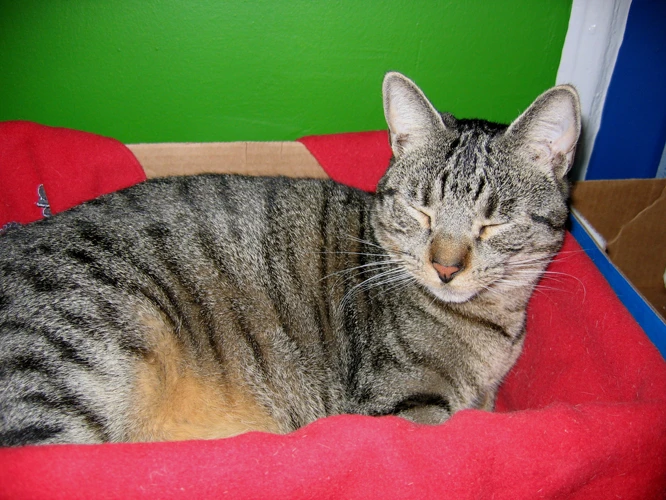
As with any breed of cat, California Spangled felines can be prone to certain health conditions. Understanding which illnesses to look out for and how to prevent or manage them can help keep your furry friend in optimal health. Here, we’ve compiled a list of common health conditions that California Spangled cats may face, along with tips on how to identify symptoms and seek veterinary care when needed. Keep reading to learn more about how to keep your beloved pet healthy and happy.
Heart Disease
Heart disease is a prevalent condition in cats, including the California Spangled breed. It can be caused by various factors, such as age, genetics, and underlying health conditions. As a responsible cat owner, you should be aware of the signs and symptoms of heart disease in your feline companion.
Some common signs to look out for include difficulty breathing, coughing, weakness and lethargy, loss of appetite, and weight loss. If you notice any of these symptoms, it is crucial to schedule a visit with your vet as soon as possible.
During your cat’s check-up, your vet will perform a physical examination to check for signs of heart disease, such as an abnormal heartbeat or a heart murmur. They may also recommend diagnostic testing, such as an electrocardiogram (ECG) or an echocardiogram, to evaluate the health of the heart muscle and valves.
Preventing heart disease in your California Spangled cat requires a combination of regular vet visits and healthy lifestyle choices. Your vet may recommend a special diet that is low in sodium and high in protein to help maintain your cat’s cardiovascular health.
Regular exercise, weight management, and stress reduction are essential in preventing heart disease in cats. Minimizing stress in your cat’s environment and providing them with a calm and comfortable place to live can go a long way in promoting their overall well-being.
Heart disease is a serious condition that can cause severe health problems in cats, including the California Spangled breed. Being aware of the signs and symptoms of heart disease in your feline companion and scheduling regular vet check-ups can help detect and manage this condition. Practicing healthy lifestyle choices can also aid in prevention. By working closely with your vet and making conscious decisions for your cat’s care, you can help ensure a healthy and happy life for your California Spangled.
Obesity
Obesity is a significant health concern for California Spangled cats. Excessive weight gain can lead to various health issues, such as liver disease, joint problems, and diabetes. Help prevent obesity in your cat by keeping them physically active and monitoring their nutrition.
Monitor your cat’s diet: Start by feeding your cat a healthy and balanced diet that meets their nutritional requirements. Measure out the appropriate portion sizes and avoid free-feeding your cat. Avoid giving your cat table scraps, as human food can be high in fat and calories, leading to weight gain. If you’re unsure about what to feed your cat, ask your vet for nutrition counseling.
Encourage Physical Activity: Keep your California Spangled active by providing them with plenty of toys to play with and opportunities to climb and explore. You can also set up an indoor play area to encourage exercise. Regular playtime with your cat can also help keep them active.
Recognize the Signs of Obesity: Regular vet check-ups can help you catch the early signs of obesity in your cat, and it’s essential to recognize these signs and act accordingly. Signs of obesity include an excessive amount of body fat, a visible decrease in definition of the waistline, and difficulty moving around.
Work with Your Vet for Prevention and Treatment: If your cat is already overweight, work with your vet to create a weight loss plan that is tailored to your cat’s needs. The vet may suggest a prescription diet or a modified exercise plan to help your cat lose weight. With proper diet and exercise, you can help your California Spangled maintain a healthy weight and reduce the risk of health issues associated with obesity.
Oral Health Issues
California Spangled cats, like any other breed, are also prone to oral health issues that can cause significant discomfort, pain, and even serious health problems. It is essential to prioritize your cat’s oral hygiene and catch any potential dental issues before they become more severe.
The following are some common oral health issues that can impact your California Spangled feline:
- Gingivitis: Gingivitis is the most common oral health issue in cats. It is a type of periodontal disease that causes inflammation and irritation of the gums. Symptoms include redness, swelling, and an unpleasant odor from the mouth. If left untreated, gingivitis can lead to tooth decay and tooth loss.
- Periodontitis: Periodontitis is an advanced form of gum disease that affects the tissues and ligaments that hold the teeth in place. One of the symptoms is the formation of pockets between the gums and teeth, which can accumulate bacteria, causing tooth loss if not treated.
- Cavities: Just like humans, cats can also develop cavities or tooth decay. It usually occurs when bacteria build-up on the tooth’s surface, leading to the formation of plaque and tartar.
- Oral cancer: Oral cancer is more common in older cats. Symptoms may include difficulty eating, bad breath, drooling, and persistent oral ulcers. Oral cancer can be fatal, and early diagnosis is crucial to increase survival rates.
To prevent these issues, it is crucial to schedule regular dental check-ups as part of your cat’s overall healthcare routine. Your vet may also recommend regular teeth cleaning to remove any tartar buildup and promote optimal oral health.
Additionally, there are some steps you can take at home to support your California Spangled’s oral health. Providing your cat with a balanced diet, offering dental chews, and avoiding sugary treats can help reduce the risk of oral health issues. Regularly brushing your cat’s teeth can also help prevent plaque buildup and bacteria growth.
Oral health is essential to your California Spangled cats’ overall wellness. By staying vigilant and scheduling regular check-ups with your vet, you can catch any potential dental issues early and take the necessary steps to prevent more severe health problems.
Arthritis
Arthritis is a common health condition that affects many California Spangled cats, especially in their senior years. This condition can cause pain and inflammation in the joints, which can significantly impact your cat’s quality of life. Here are some signs that your cat may be suffering from arthritis:
- Limping or stiffness
- Difficulty jumping or climbing stairs
- Reluctance to play or groom themselves
- Loss of appetite or weight loss
If you notice any of these signs, it’s important to schedule a vet check-up right away. Your vet can diagnose arthritis and discuss appropriate treatment options with you. Treatment may include medications, supplements, or changes to your cat’s diet and exercise routine.
Preventative measures can also help reduce the risk of arthritis in your California Spangled cat. Making sure your cat is at a healthy weight can reduce the strain on their joints. Physical activity can also keep your cat’s joints flexible and healthy. You can encourage exercise by providing toys and scratching posts, and setting aside time each day to play with your cat.
Finally, regular vet check-ups are crucial in managing arthritis. Your vet can monitor your cat’s joints and adjust their treatment plan as needed. With proper care, your California Spangled cat can enjoy a happy, healthy life even with arthritis.
Tips for Making Vet Visits Less Stressful
Visiting the vet can be a daunting experience for many cats, and their owners, alike. The unfamiliar surroundings, strange smells, and unfamiliar faces can cause stress and anxiety for even the most well-behaved California Spangled felines. However, there are some things you can do to help make the experience less stressful for both you and your pet. Here are some helpful tips to help make your next vet visit with your California Spangled a success.
Get Your Feline Companion Used to the Carrier
One of the most stressful parts of taking your California Spangled to the vet can be getting them in the carrier. Many cats associate the carrier with uncomfortable situations or trips to the vet which can cause them to be anxious or even outright hostile towards it. The good news is that there are some things you can do to help your cat feel more comfortable with the carrier.
1. Leave the Carrier Out
Before your next appointment, try leaving the carrier out a few days before the appointment so that your cat can get used to it. Place treats, toys, and comfortable bedding inside the carrier to encourage your cat to enter and explore it.
2. Familiarize Them with the Carrier
Start by getting your cat used to the carrier being in the house. Place the carrier in a calming location and let your cat check it out in their own time. Encourage them with treats and toys to enter the carrier and let them explore it at their leisure.
3. Make the Carrier a Safe Space
Turn the carrier into a safe and comfortable space by lining it with a soft blanket and treats to encourage your cat to use it as a resting spot. Make sure that the carrier is accessible to your cat at all times.
4. Take Short Car Rides
Once your cat is comfortable with the carrier, start taking short car rides to help them get used to the motion of the car. Gradually increase the length of the trips, so your cat can adapt to it.
5. Reward Your Cat
Finally, always remember to reward your cat for good behavior. Offer them treats and praise when they enter the carrier or remain calm during short trips. Positive reinforcement will help them associate the carrier with good experiences instead of stressful ones.
Getting your California Spangled used to the carrier may take some time and patience, but it will make a big difference in reducing their stress and making vet visits more manageable.
Avoid Feeding Your Cat Before the Appointment
When preparing for your California Spangled’s vet check-up, it’s important to remember to avoid feeding your cat before the appointment. This helps to ensure that your cat is not nauseated or vomiting during the exam, which could lead to inaccurate or incomplete test results. To make this process easier, here are some tips to keep in mind:
- Plan ahead: Schedule your cat’s appointment for a time when you know they won’t be as hungry, such as the morning or early afternoon.
- Avoid free-feeding: Limit your cat’s food intake before the appointment by removing their food bowl for a few hours prior to the exam. This will help to ensure that your cat is hungry enough to be motivated by treats, but not so hungry that they feel sick.
- Bring treats: Bring some of your cat’s favorite treats to the appointment. These can be used as a reward for good behavior and will help to keep your cat motivated and engaged during the exam. Just be sure to check with your veterinarian about which treats are appropriate for your cat’s health needs.
- Hydrate: Be sure to offer your cat plenty of water before the appointment to help prevent dehydration. This can help to keep your cat more comfortable during the exam and also helps to ensure that urine samples are easier to collect.
By following these tips, you can help to ensure that your California Spangled is comfortable and ready for their vet check-up. Avoiding feeding your cat before the appointment is just one small step, but it can make a big difference in the quality of care they receive.
Bring Your Pet’s Favorite Toys or Blanket for Comfort
It’s no secret that going to the vet can be a stressful experience for your California Spangled feline companion. To help ease their anxiety and promote relaxation, you can bring along their favorite toys or blanket for comfort.
Here are some reasons why bringing along familiar items can be beneficial:
- Comfort: Familiar scents and textures can provide your cat with a sense of security and comfort, reducing their stress levels during the visit.
- Distraction: Playing with their favorite toy can help distract your cat from the unfamiliar and potentially scary surroundings of the clinic.
- Familiarity: Having their own blanket or towel can make a sterile and unfamiliar exam table seem less intimidating to your furry friend.
It’s important to note that not all toys or blankets may be suitable for a vet visit. Choose items that are easy to clean and won’t cause any harm to your cat or others in the clinic.
Additionally, it’s always a good idea to check with your vet beforehand to see if there are any specific restrictions or guidelines for bringing items from home.
Bringing along your California Spangled’s favorite toys or blanket can help make their visit to the vet more comfortable and less stressful, resulting in a better experience for both you and your furry companion.
Ask Your Vet About Anxiety-Reducing Medications Before the Appointment
It’s not uncommon for California Spangled felines to experience anxiety during vet visits. To alleviate this, there are medications that a vet may prescribe to help calm and relax your cat. Before the appointment, consult your vet about whether or not anxiety-reducing medications are a good option for your pet. Here are a few possible anxiety-reducing medications that you may want to discuss with your vet:
- Benzodiazepines: These drugs work by enhancing the effect of a calming brain transmitter. They can help reduce anxiety and promote relaxation.
- Gabapentin: This medication is often used to treat seizures and nerve pain, but it can also be used as a mild sedative to calm anxious cats before vet visits.
- Trazodone: This medication can help reduce anxiety in cats without causing sedation. It is often used to treat separation anxiety, but can also be used before vet visits.
It’s important to note that medication should not be the first solution for anxiety in cats. There are behavioral modifications and training techniques that can also be used to help calm your feline companion during vet visits. Discussing these options with your vet is the best course of action to determine the best approach for your cat’s specific needs.
Conclusion
In conclusion, taking your California Spangled to the vet for regular check-ups is essential for maintaining their health and well-being. Not only can vet visits help detect and prevent health issues early, but they also provide opportunities for nutrition counseling, dental health examination, and parasite prevention and treatment.
When choosing a vet for your California Spangled, consider factors such as their credentials and experience, availability, location, and clinic environment, as well as your budget and payment options.
As for how often to take your feline companion to the vet, it depends on their life stage. Kittens and senior cats may require more frequent visits, while adult cats may need annual check-ups.
It’s important to keep an eye out for common health conditions in California Spangled cats, such as heart disease, obesity, oral health issues, and arthritis. And fortunately, there are ways to make vet visits less stressful for your furry friend, such as getting them used to the carrier and bringing their favorite toys or blanket for comfort.
Regular vet check-ups for your California Spangled can help ensure a long and healthy life for your beloved feline friend. Don’t wait until an issue arises – schedule those check-ups and take proactive steps to maintain their optimal health!
Frequently Asked Questions
1. How often should I take my California Spangled to the vet?
For optimal feline health, it’s recommended that you take your California Spangled to the vet at least once a year. However, more frequent check-ups may be necessary depending on your cat’s individual health needs and any pre-existing medical conditions.
2. What vaccinations does my California Spangled need?
Your California Spangled will need core vaccinations to protect against diseases like rabies, Feline Distemper (Panleukopenia), and Feline Calicivirus, among others. Your vet may also discuss non-core vaccinations that may be recommended based on your cat’s lifestyle and risk factors.
3. Can I skip regular check-ups if my cat appears healthy?
No, regular check-ups are still important even if your California Spangled appears healthy. Cats are known for hiding signs of illness or pain, so it’s crucial that a vet examines your cat to detect any underlying health issues early.
4. Do I need to prepare my California Spangled for their check-up?
It’s recommended that you bring your California Spangled in a carrier and avoid feeding them before the appointment. This will keep your cat safe and make it easier for your vet to perform any necessary diagnostic tests or procedures.
5. What should I look for when choosing a vet for my California Spangled?
When choosing a vet, look for someone who is experienced in feline healthcare and has a good bedside manner. Consider their credentials, the location of the clinic, and the costs of their services in addition to the quality of care they provide.
6. What are some common health conditions in California Spangled cats?
Heart disease, obesity, oral health issues, and arthritis are all common health conditions in California Spangled cats. Regular check-ups with a vet can help prevent and manage these conditions.
7. How can I make vet visits less stressful for my California Spangled?
You can help reduce your cat’s stress by getting them used to their carrier, avoiding feeding them before the appointment, bringing their favorite toys or blanket for comfort, and discussing anxiety-reducing medications with your vet before the appointment.
8. Why is dental health important for my California Spangled?
Poor dental health can lead to a host of health problems in cats, including gum disease, tooth decay, and infections that can spread throughout the body. Regular dental check-ups and cleanings can help prevent these issues.
9. What are some signs that my California Spangled may be in pain?
Signs that your California Spangled may be in pain include changes in their behavior, vocalization, appetite, or activity level. If you notice any of these changes, speak with your vet to determine the underlying cause.
10. Why is parasite prevention important for my California Spangled?
Parasites like fleas, ticks, and heartworms can cause serious health problems in cats and even be life-threatening in extreme cases. Regular parasite prevention methods can help keep your cat healthy and free of infestations.

